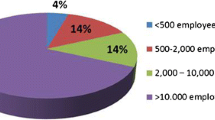Abstract
Pharmacokinetic (PK) and pharmacodynamic (PD) modeling and simulation (M&S) are well-recognized powerful tools that enable effective implementation of the learn-and-confirm paradigm in drug development. The impact of PK/PD M&S on decision making and drug development risk management is dependent on the question being asked and on the availability and quality of data accessible at a particular stage of drug development. For instance, M&S methodologies can be used to capture uncertainty and use the expected variability in PK/PD data generated in preclinical species for projection of the plausible range of clinical dose; clinical trial simulation can be used to forecast the probability of achieving a target response in patients based on information obtained in early phases of development. Framing the right question and capturing the key assumptions are critical components of the “learn-and-confirm” paradigm in the drug development process and are essential to delivering high-value PK/PD M&S results. Selected works of PK/PD modeling and simulation from preclinical to phase III are presented as case examples in this article.
Similar content being viewed by others
References
Sheiner LB. Learning versus confirming in clinical drug development.Clin Pharmacol Ther. 1997;61:275–291.
Kimko HC, Duffull SB, eds. Simulation for Designing Clinical Trials.A Pharmacokinetic-Pharmacodynamic Modeling Perspective. New York: Marcel Dekker; 2003.
Peck CC, Barr WH, Benet LZ, et al. Opportunities for integration of pharmacokinetics, pharmacodynamics, and toxicokinetics in rational drug development.J Clin Pharmacol. 1994;34:111–119.
Galluppi GR, Rogge MC, Roskos LK, et al. Integration of pharmacokinetic and pharmacodynamic studies in the discovery, development, and review of protein therapeutic agents: a conference report.Clin Pharmacol Ther. 2001;69:387–399.
Lesko LJ, Rowland M, Peck CC, Blaschke TF. Optimizing the science of drug development: opportunities for better candidate selection and accelerated evaluation in humans.Pharm Res. 2000;17:1335–1344.
Sheiner LB, Steimer JL. Pharmacokinetic/pharmacodynamic modeling in drug development.Annu Rev Pharmacol Toxicol. 2000;40:67–96.
U.S. Department of Health and Human Services, FDA. Exposure-response relationships—study design, data analysis, and regulatory applications. Available at: http://www.fda.gov/cder/ gdlns/exposure.htm. Accessed May 9, 2005.
Holford NHG, Hale M, Ko HC, Steimer J-L, Sheiner LB, Peck CC. Simulation in Drug Development: Good Practices. Available at: http://cdds.georgetown.edu/research/sddgp723.html. Accessed May 9, 2005.
Holford NH, Kimko HC, Monteleone JP, Peck CC. Simulation of clinical trials.Annu Rev Pharmacol Toxicol. 2000;40:209–234.
Kimko HC, Reele SS, Holford NH, Peck CC. Prediction of the outcome of a phase 3 clinical trial of an antischizophrenic agent (quetiapine fumarate) by simulation with a population pharmacokinetic and pharmacodynamic model.Clin Pharmacol Ther. 2000;68:568–577.
Gisleskog PO, Karlsson MO, Beal SL. Use of prior information to stabilize a population data analysis.J Pharmacokinet Pharmacodyn. 2002;29:473–505.
Duffull SB, Mentré F, Aarons L. Optimal design of a population pharmacodynamic experiment for ivabradine.Pharm Res. 2001;18:83–89.
Retout S, Mentre F. Optimization of individual and population designs using S-PLUS.J Pharmacokinet Pharmacodyn. 2003;30:417–443.
Ette EI, Howie CA, Kelman AW, Whiting B. Experimental design and efficient parameter estimation in preclinical pharmacokinetic studies.Pharm Res. 1995;12:729–737.
Hutmacher MM, Kowalski KG. Evaluation of random sparse sampling designs for a population pharmacokinetic study: Assessment of power and bias using simulations. In: Kimko HC, Duffull SB, eds.Simulation for Designing Clinical Trials. A Pharmacokinetic-Pharmacodynamic Modeling Perspective. New York: Marcel Dekker; 2003.
Dantzig A, de Alwis DP, Burgess M. Considerations in the design and development of transport inhibitors as adjuncts to drug therapy.Adv Drug Deliv Rev. 2003;55:133–150.
Giaccone G, Linn SC, Welink J, et al. A dose-finding and pharmacokinetic study of reversal of multidrug resistance with SDZ PSC 833 in combination with doxorubicin in patients with solid tumors.Clin Cancer Res. 1997;3:2005–2015.
van Tellingen O, Kemper M, Beijnen JH. P-glycoprotein inhibition in tumors by PSC833: impact of dose adjustments on the efficacy of doxorubicin chemotherapy.AACR. 2001;42:950.
Callies S, de Alwis DP, Mehta A, Burgess M, Aarons L. Population pharmacokinetic model for daunorubucuin and daunorubicinol coadministered with zosuquidar. 3HCL (LY335979).Cancer Chemother Pharmacol. 2004;54:39–48.
Callies S, de Alwis DP, Wright JG, Sandler A, Burgess M, Aarons L. A population pharmacokinetic model for doxorubicin and doxorubicinol in the presence of a novel MDR modulator, zosuquidar trihydrochloride (LY335979).Cancer Chemother Pharmacol. 2003;51:107–118.
Peck CC, Rubin DB, Sheiner LB. Hypothesis: a single clinical trial plus causal evidence of effectiveness is sufficient for drug approval.Clin Pharmacol Ther. 2003;73:481–490.
Holford NHG, Coates PE, Guentert TW, Riegelman S, Sheiner LB. The effect of quinidine and its metabolites on the electrocardiogram and systolic time intervals: concentration-effect relationships.Br J Clin Pharmacol. 1981;11:187–195.
Malik M, Farbom P, Batchvarov V, Hnatkova K, Camm AJ. Relation between QT and RR intervals is highly individual among healthy subjects: implications for heart rate correction of the QT interval.Heart. 2002;87:220–228.
Yano Y, Beal SL, Sheiner LB. Evaluating pharmacokinetic/ pharmacodynamic models using the posterior predictive check.J Pharmacokinet Pharmacodyn. 2001;28:171–192.
U.S. Department of Health and Human Services, FDA. Guidance for Industry: Population Pharmacokinetics. Available at: http://www.fda/gov/cder/guidance/1852fnl.pdf. Accessed May 9, 2005.
Venitz J. Using exposure-response relationships to define a therapeutic index. Clinical Pharmacology Subcommittee for Pharmaceutical Science, US Department of Health and Human Services, FDA. ACPS Clinical Pharmacology Subcommittee Meeting October 23, 2002. Rockville, MD, NTI-CPSC Presentation, October 23, 2002. Available at: www.fda.gov/ohrms/dockets/ac/02/slides/ 3898S1_06_Venitz.pdf. Accessed May 9, 2005.
Stanski DR. Model-Based Drug Development: A Critical Path Opportunity. Available at: http://www.fda.gov/oc/initiatives/ criticalpath/stanski/stanski.html. Accessed May 9, 2005.
U.S. Department of Health and Human Services, FDA. Challenge and opportunity on the critical path to new medical products. FDA, March 2004. Available at: http://www.fda.gov/oc/initiatives/ criticalpath/whitepaper.html. Accessed May 9, 2005.
Author information
Authors and Affiliations
Corresponding author
Additional information
Published: October 7, 2005
Rights and permissions
About this article
Cite this article
Chien, J.Y., Friedrich, S., Heathman, M.A. et al. Pharmacokinetics/pharmacodynamics and the stages of drug development: Role of modeling and simulation. AAPS J 7, 55 (2005). https://doi.org/10.1208/aapsj070355
Received:
Accepted:
DOI: https://doi.org/10.1208/aapsj070355




